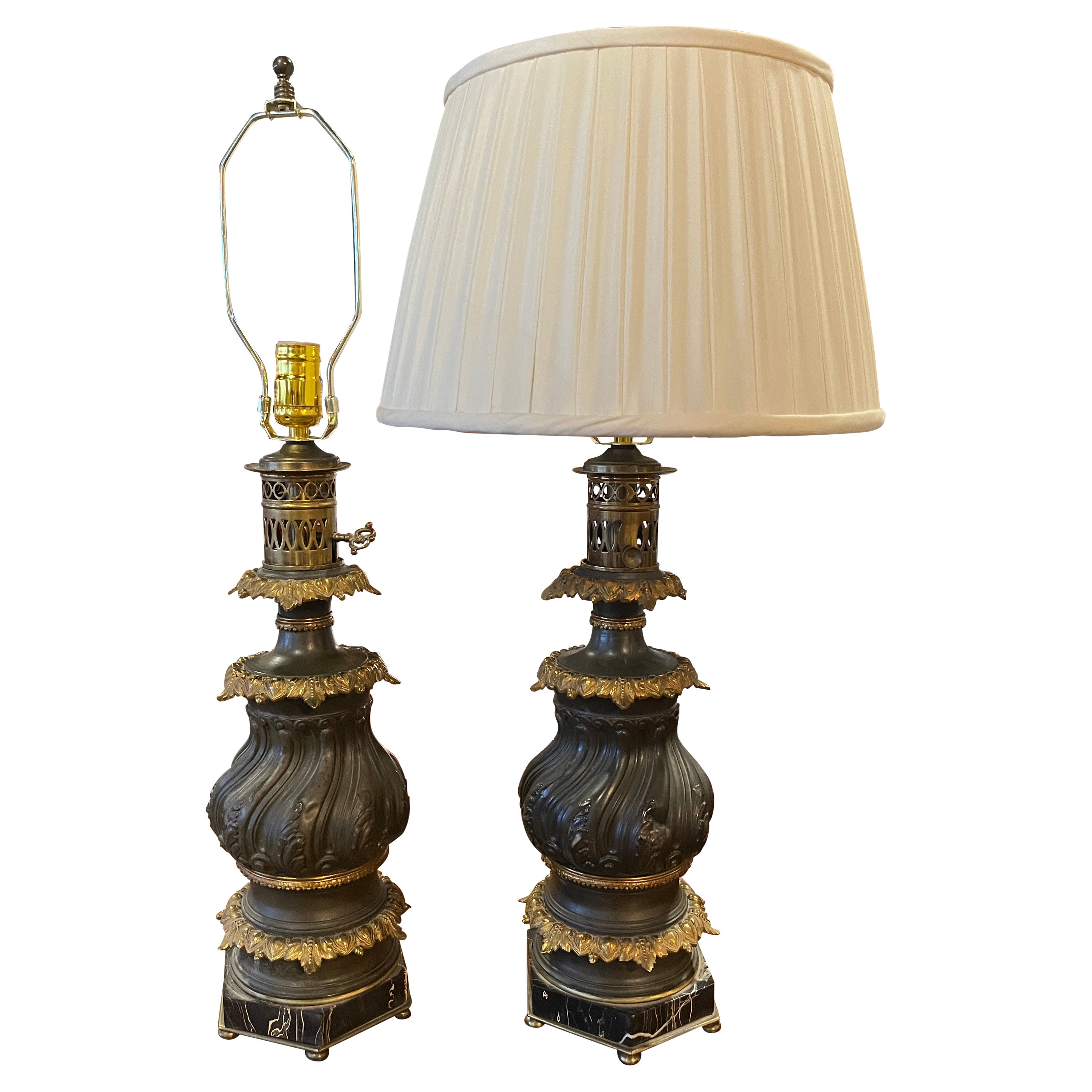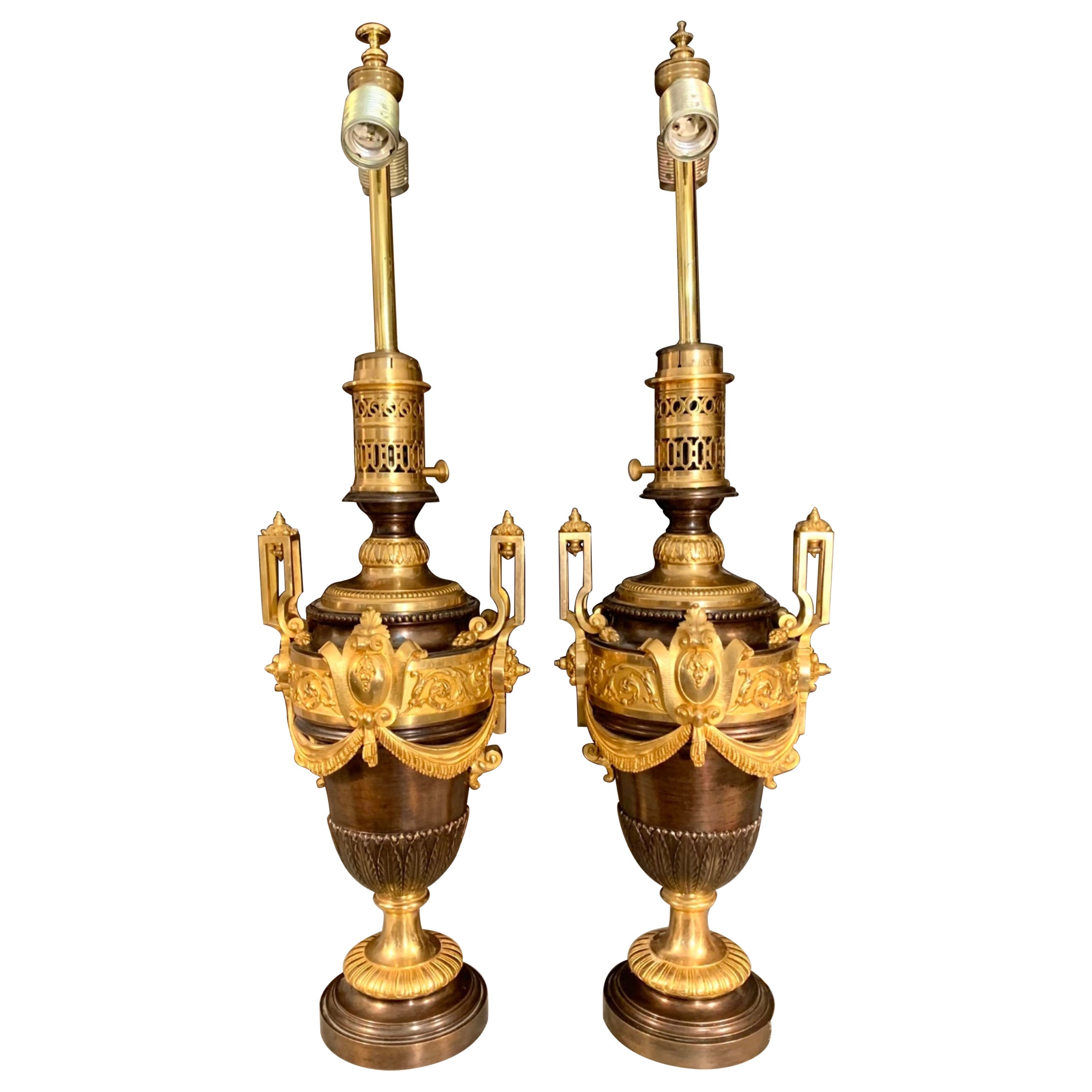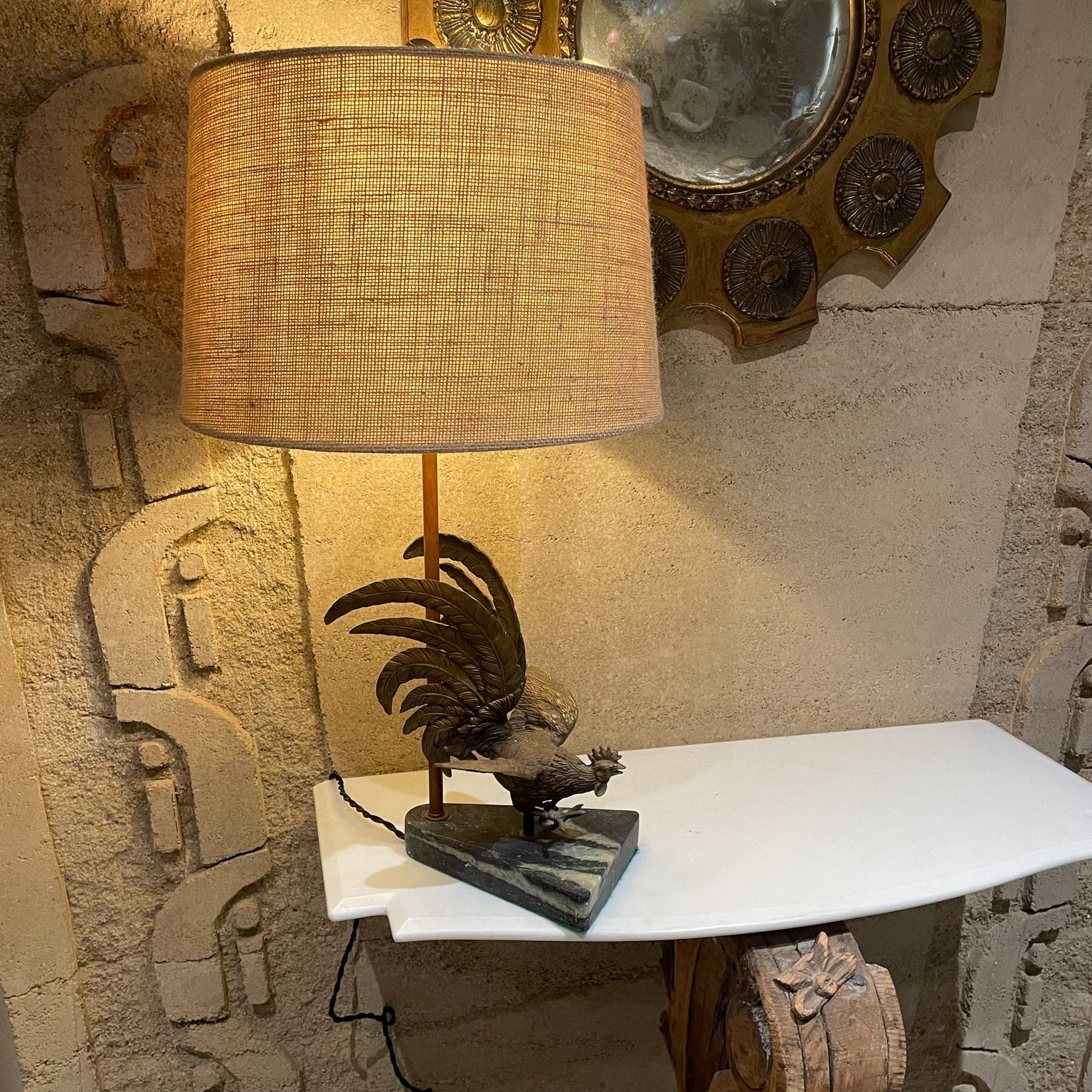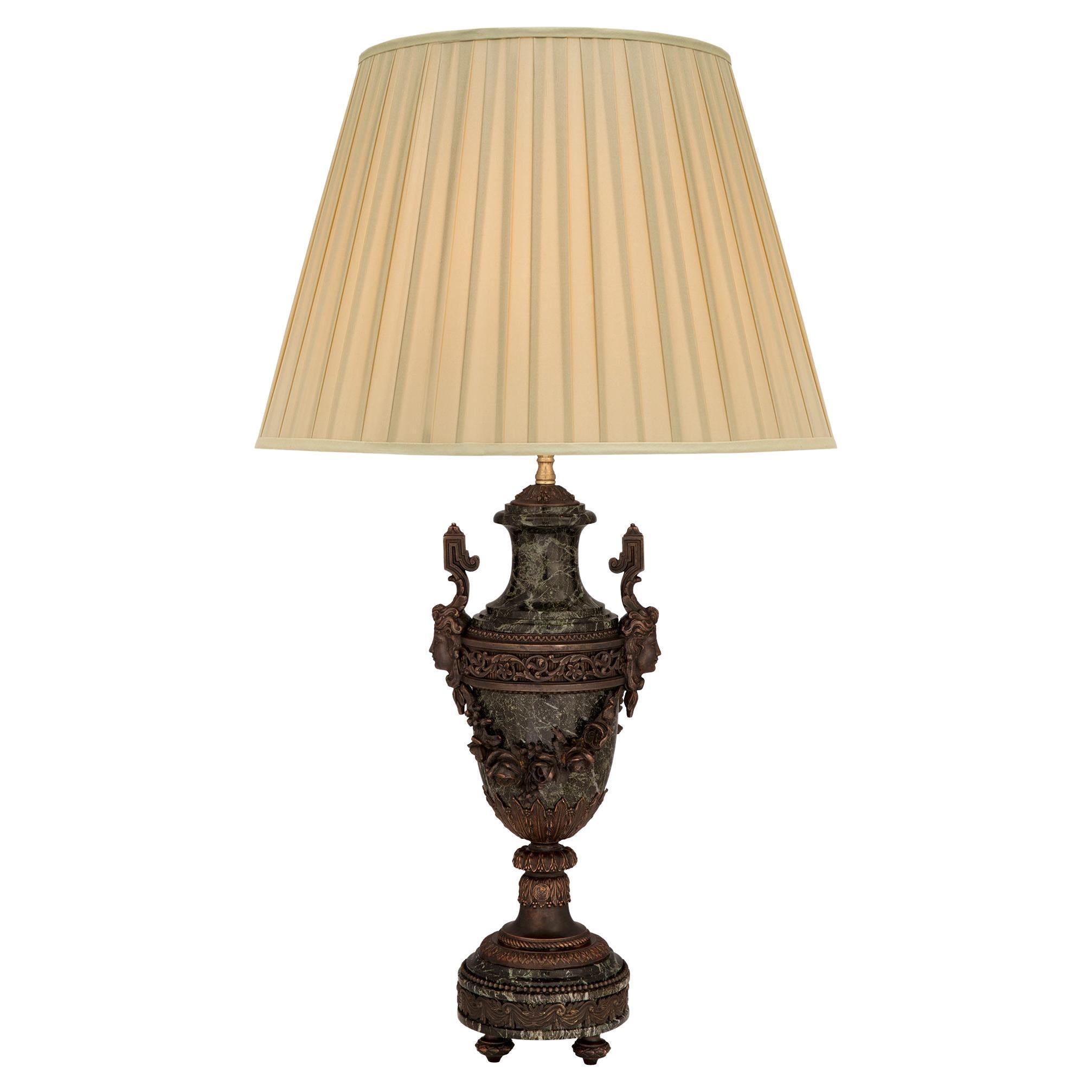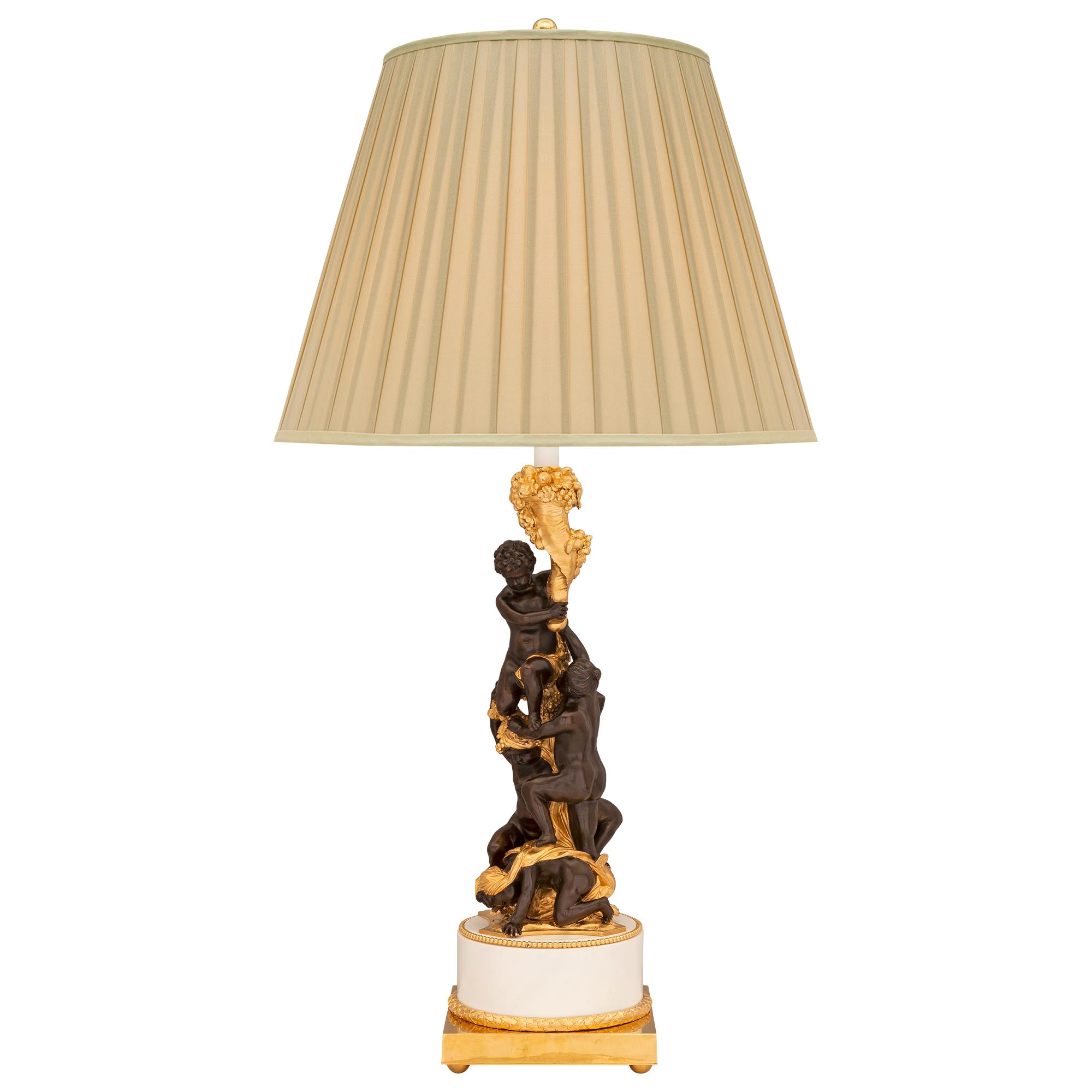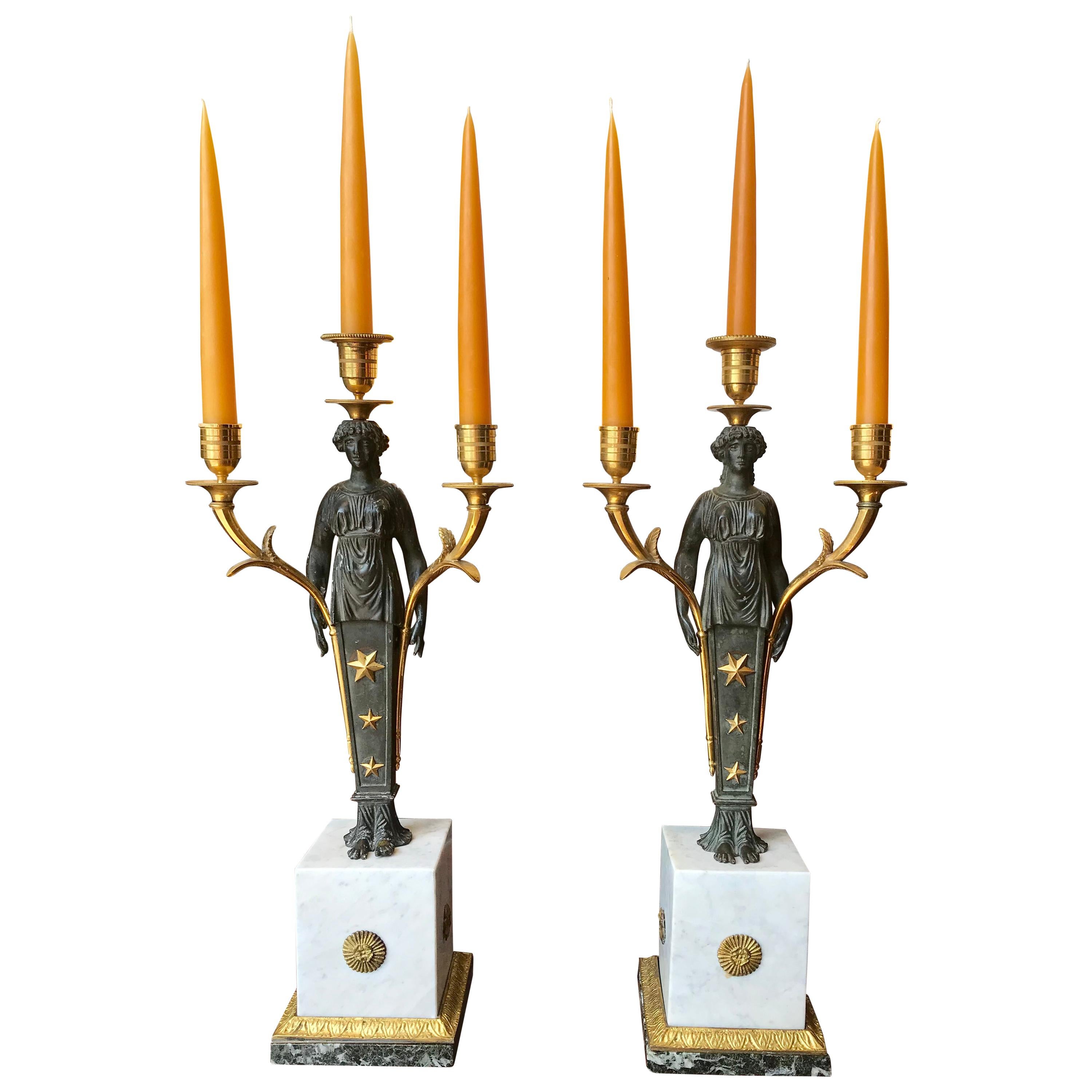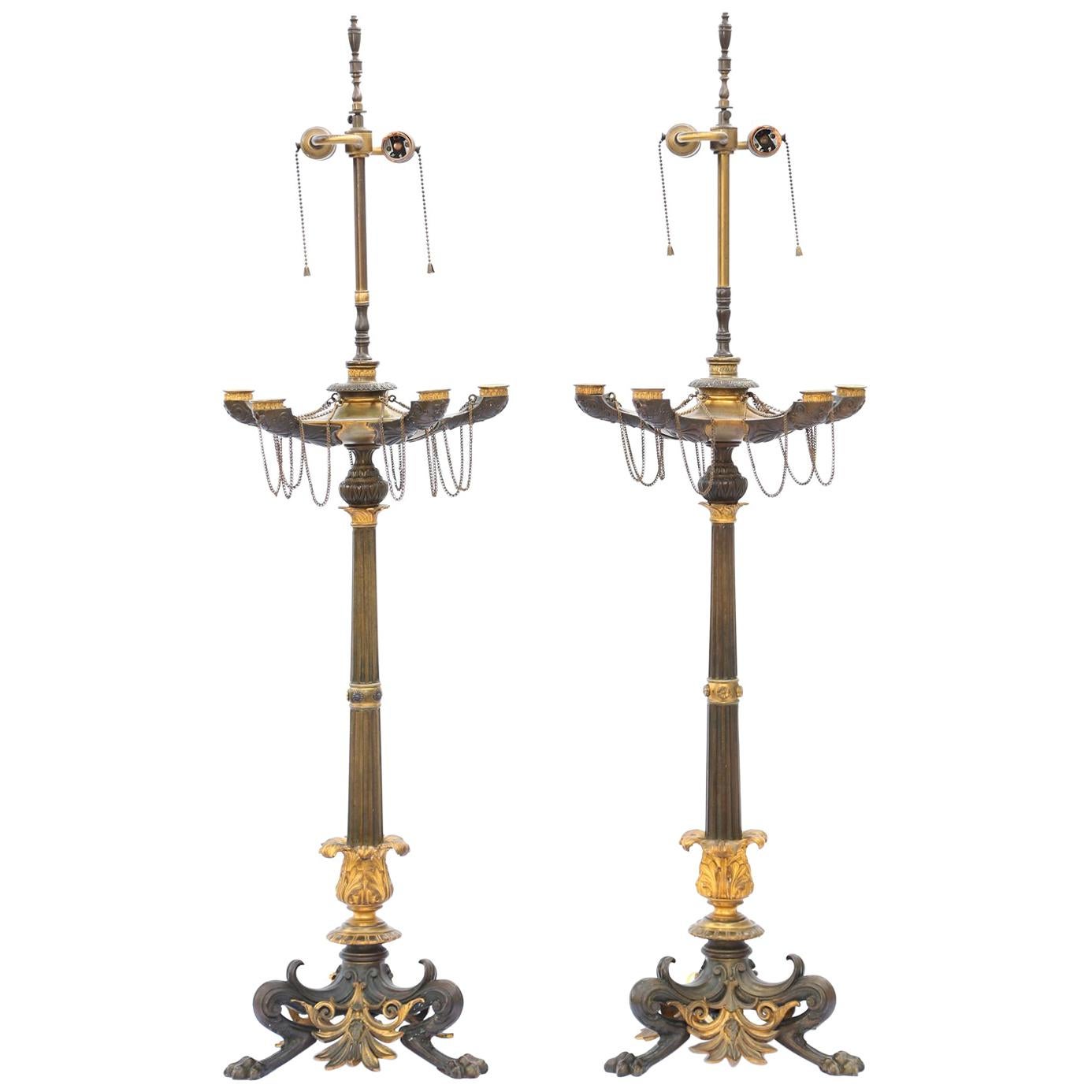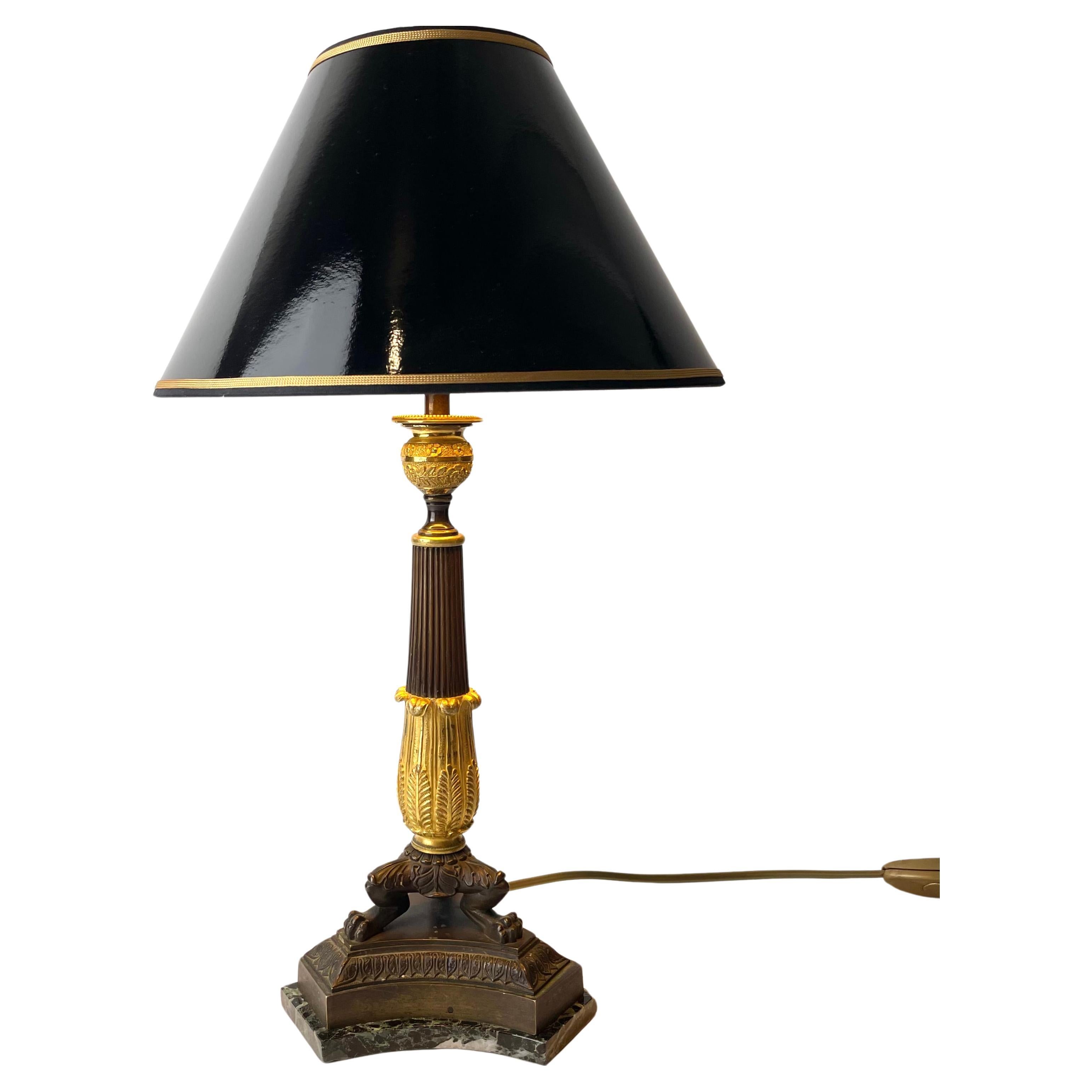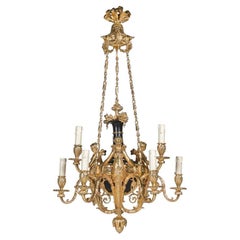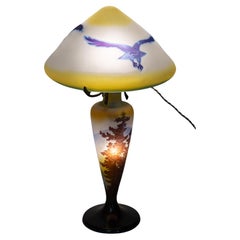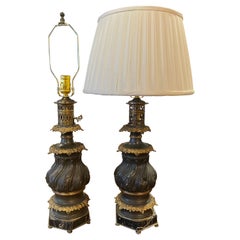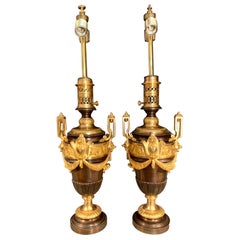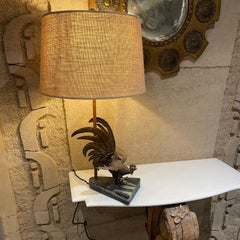
Patinated Bronze and Ormolu Lamp Three Graces Designed on a Green Marble Base
View Similar Items
Want more images or videos?
Request additional images or videos from the seller
1 of 11
Patinated Bronze and Ormolu Lamp Three Graces Designed on a Green Marble Base
About the Item
- Creator:Alfred Marrionet (Maker)
- Dimensions:Height: 15.75 in (40 cm)Width: 6.7 in (17 cm)Depth: 6.7 in (17 cm)
- Style:Napoleon III (Of the Period)
- Materials and Techniques:
- Place of Origin:
- Period:
- Date of Manufacture:circa 1890
- Condition:
- Seller Location:Saint-Ouen, FR
- Reference Number:1stDibs: LU261237925953
About the Seller
4.9
Vetted Seller
These experienced sellers undergo a comprehensive evaluation by our team of in-house experts.
1stDibs seller since 2017
57 sales on 1stDibs
Typical response time: 1 hour
More From This SellerView All
- Pair of Porcelain Vases Ormolu-Mounted in Lamps by Gagneau Paris XIXth CenturyBy Gagneau ParisLocated in Saint-Ouen, FRPair of large Japanese Porcelain Cone Shape Vases with Imari decoration Important mounts in ormolu and gilded metal, the base decorated with a laurel wreath, the upper part of falling leaves and a frieze of knotted ribbon. The mounts signed Gagneau, 115 R. Lafayette. Circa 1860 With their original aluminium bulb cover and original gilding Vase it self Height 47 cm The Gagneau Company is one of the most famous lighting factories in Paris in the nine-teenth century, established in 1800 at 25 rue d'Enghien in Paris and later at 115 rue de Lafayette. She has participated in many exhibitions throughout this century. She began in 1819 with the Exposition des Produits de l'Industrie and later participated in the Universal Exhibitions where she was part of the jury in the category of art bronzes (class 25) at the Universal Exhibition in Paris in 1889. "Imari" was simply the trans-shipment port for Arita wares, from where they went to the for-eign trading outposts at Nagasaki. It was the kilns at Arita which formed the heart of the Japanese porcelain industry. Arita's kilns were set up in the 17th century, after kaolin was discovered in 1616. A popular legend attributes the discovery to an immigrant Korean potter, Yi Sam-Pyeong (1579–1655), although most historians consider this doubtful. After the discovery, some kilns began to produce revised Korean-style blue and white porcelains, known as Early Imari, or "Shoki-Imari". In the mid-17th century, there were also many Chinese refugees in northern Kyushu due to the turmoil in China, and it is said that one of them brought the overglaze enamel coloring technique to Arita. Thus Shoki-Imari developed into Ko-Kutani, Imari, and later Kakiemon, which are sometimes taken as a wider group of Imari wares. Ko-Kutani was produced around 1650 for both export and domestic market.Kutani Ware is characterized by vivid green, blue, purple, yellow and red colors in bold designs of landscapes and nature. Blue and white porcelain pieces continued to be produced and they are called Ai-Kutani. Ko-Kutani Imari for the export market usually adopted Chinese design structure such as kraak style, whereas Ai-Kutani for the domestic market were highly unique in design and are ac-cordingly valued very much among collectors. Ko-Kutani style evolved into Kakiemon-style Imari, which was produced for about 50 years around 1700. Kakiemon was characterized by crisp lines, and bright blue, red and green designs of dramatically stylized floral and bird scenes. Imari achieved its technical and aes-thetic peak in the Kakiemon style, and it dominated the European market. Blue and white Kakiemon is called Ai-Kakiemon. The Kakiemon style transformed into Kinrande in the 18th century, using underglaze blue and overglaze red and gold enamels, and later additional colors. Imari began to be exported to Europe when the Chinese kilns at Jingdezhen were damaged in the political chaos and the new Qing dynasty government halted trade in 1656–1684. Ex-ports to Europe were made through the Dutch East India Company, and in Europe the des-ignation "Imari porcelain" connotes Arita wares of mostly Kinrande Imari. Export of Imari to Europe stopped in mid-18th century when China resumed export to Europe, since Imari was not able to compete against Chinese products due to high labor costs. By that time, however, both Imari and Kakiemon styles were already so popular among Eu-ropeans that the Chinese export porcelain copied both, a type known as Chinese Imari. At the same time, European kilns, such as Meissen and English potteries such as Johnson Bros. and (Royal) Crown Derby, also imitated the Imari and Kakiemon styles. Export of Imari surged again in late 19th century (Meiji era) when Japonism flourished in Europe.Thus, in the western world today, two kinds of true Japanese Imari can...Category
Antique 1880s French Japonisme Table Lamps
MaterialsBronze
- A Louis XVI Style Ormolu and Patinated 6-Light Chandelier "aux Termes"By François Rémond, Alfred Emmanuel Louis BeurdeleyLocated in Saint-Ouen, FRA very fine French Ormolu and patinated metal nine-lights figural chandelier "aux Termes" In chiseled, gilded and patinated bronze, the shaft consists of an ovoid-shaped vase in blued patinated bronze...Category
Antique 1870s French Louis XVI Chandeliers and Pendants
MaterialsBronze, Metal
$15,666 Sale Price25% Off - Émile GALLE (1846-1904) "Paysage Vosgien" Glass Lamp circa 1900By Emile GalléLocated in Saint-Ouen, FRÉmile GALLE (1846-1904) "Paysage Vosgien" A multilayer glass lamp by Gallé With an etched decor of a green and blue Vosgien landscape on the foot and of flying eagles on the lamps...Category
Antique Early 1900s French Art Nouveau Table Lamps
MaterialsBronze
- French Japonisme Lacquered Metal Jardinière on Ormolu Stand Signed MarnyhacBy Edouard Lievre, Maison Marnyhac 1Located in Saint-Ouen, FRJardinière Médicis vase shape in copper with gold lacquered decoration on a burgundy background of a Japanese landscape with a volcano and an eagle ...Category
Antique 1870s French Japonisme Planters, Cachepots and Jardinières
MaterialsMetal, Bronze
$18,400 Sale Price20% Off - Gabriel Argy-Rousseau (1885-1963) « Danseuses sous les projecteurs' » VeilleuseBy Gabriel Argy-RousseauLocated in Saint-Ouen, FRGabriel Argy-Rousseau (1885-1963) A « Danseuses sous les projecteurs' » Veilleuse, circa 1928 Pâte-de-verre Original wrought-iron base signed in the mold G. ARGY-ROUSSEAU H 12,5 cm ...Category
Vintage 1920s French Art Deco Table Lamps
MaterialsWrought Iron
- A French ‘Chariot’ Three-pieces Clock Garniture attributed to F.Linke circa 1890By François LinkeLocated in Saint-Ouen, FRA French Ormolu and Patinated-Bronze ‘Chariot’ Three-pieces Clock Garniture Attributed to François Linke (1855 - 1946), Paris, Late 19th/ Century The clock representing a putto on ...Category
Antique 1890s French Napoleon III Mantel Clocks
MaterialsBronze, Ormolu, Enamel
You May Also Like
- 19th Century Bronze and Ormolu Oil Lamps on Marble Base, converted electricLocated in Scottsdale, AZ19th Century Bronze and Ormolu Oil Lamps on Marble Base, converted to electricCategory
Antique Late 19th Century Napoleon III Table Lamps
MaterialsOrmolu
- Pair French Patinated Bronze and Ormolu Vases Mounted Table LampsLocated in Madrid, ESA pair of two-handled vases / lamps in classic French Napoleon III style bronze and gilt ormolu of very good quality, each with a foliated plant decoration in bronze, the ormolu orna...Category
Antique Late 19th Century European Napoleon III Table Lamps
MaterialsBronze, Ormolu
- 1960s Bronze Rooster Table Lamp Green Marble BaseBy Maison CharlesLocated in Chula Vista, CATable Lamp Hollywood Regency Sassy Rooster in Bronze Sculptural Table Lamp Midcentury Modern 1960s Mounted on Green Marble base. Unmarked. In the style of Maison Charles. Dimensions:...Category
Vintage 1960s American Mid-Century Modern Table Lamps
MaterialsCarrara Marble, Brass, Bronze
- Edward F Caldwell Gilt and Patinated Bronze Lamps with Putti and Green MarbleBy Edward F. Caldwell & Co.Located in New York, NYLarge pair of Edward F Caldwell & co patinated and gilt bronze table lamps with fluted green marble bases. The bodies of the lamps are in the shape of two beautifully round Putti hoi...Category
Antique 19th Century Baroque Table Lamps
MaterialsBronze, Gold Leaf
- French 19th Century Louis XVI Style Patinated Bronze, Ormolu and Marble LampLocated in West Palm Beach, FLAn elegant French 19th century Louis XVI st. patinated bronze, ormolu and Vert de Patricia marble lamp. The lamp is raised by fine topie shaped feet with a lovely berried laurel band...Category
Antique 19th Century French Louis XVI Table Lamps
MaterialsMarble, Bronze
- French 19th Century Louis XVI St. Patinated Bronze, Ormolu, and Marble LampLocated in West Palm Beach, FLA beautiful high quality French 19th century Louis XVI st. patinated bronze, ormolu, and white Carrara marble lamp, retailed by Caldwell of New York. The lamp is raised by a square o...Category
Antique 19th Century French Louis XVI Table Lamps
MaterialsBronze, Ormolu
Recently Viewed
View AllMore Ways To Browse
Three Graces Bronze
Napoleon Ormolu Lamps
Three Graces Marble
Three Graces Lamp
Orange And Blue Lamp
Pair Of Deco Brass Table Lamps
Antique Silver Lamp Base
Black And White Marble Table Lamps
Mushroom Shaped
Atomic Lamps
Wood Table Lamp Linen Shade
Brass Base Globe Lamp
Sculptural Lucite Dining
Lamps Block Glass
Large Urn Lamps
Laurel Glass Lamps
Mid Century Lamp Ceramic Gold
Lucite Table Lamp Black
